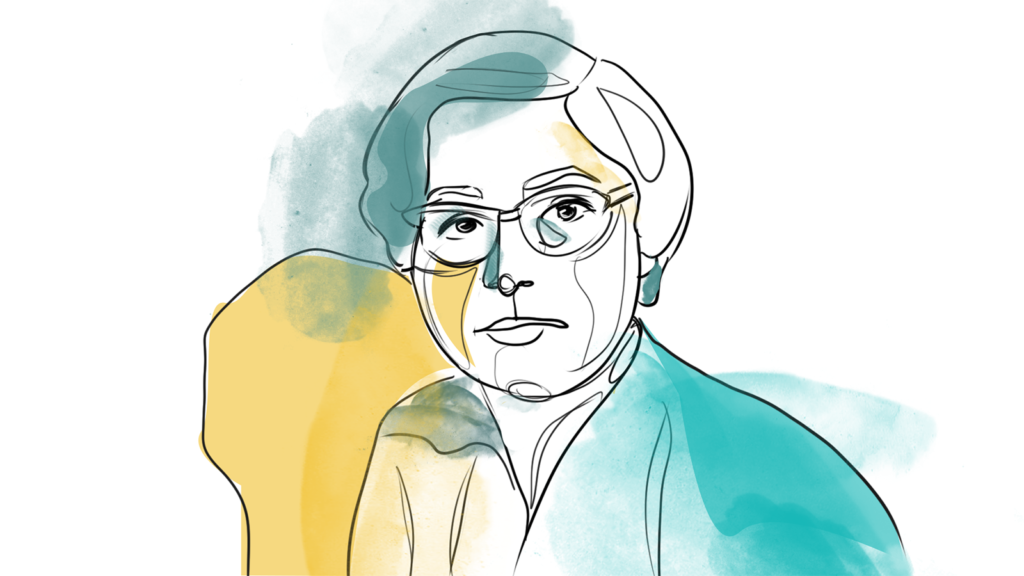Vera Rubin was a powerhouse in astrophysics, though she rarely gets the credit she deserves. Rubin is responsible for discovering dark matter, which makes up 84% of the material that exists in the universe.
Born in 1928, a young Vera became enthralled with space while staring at the stars outside her bedroom window. After receiving a full ride to Vassar College, Vera went on to study how galaxies move in space and found some unexpected results.
Rubin expected galaxies to move in the same way planets revolve around the sun. Objects closer to the sun move faster than those that are further away. However, using her keen observational skills, she discovered that all objects in a galaxy move at the same speed, no matter how far they are from the center.
Dark matter is responsible for this phenomenon, and Rubin’s discovery set the course for modern astronomy studies. Her approach to problem-solving and innovation holds many lessons for us today.
This article is part of the Brilliant Thinkers series, which explores the thought processes, working habits, and decision-making principles applied by intellectuals who profoundly impacted the world with their discoveries and the way they challenged the status quo.
Vera Rubin’s thinking strategies
Vera Rubin had a unique way to navigate the world, ask questions, and make connections. Three strategies in particular have helped make immense contributions to science.
1. Practicing visual thinking. Rubin’s interest in visual thinking started when she was young. She would stare out of her bedroom window and watch the stars as they moved. She drew maps of meteor showers showing the direction of the streaks that fell from the sky. As her observational skills improved, Rubin continued to rely on drawings to understand what was happening in the universe.
While collecting data about galaxies at the Carnegie Institute, Rubin used visual thinking to explain the perplexing results. Using the data printed out on punch cards, she made sketches to help her figure out how to explain the results. Even when she looked at different galaxies, the same pictures would emerge repeatedly. These pictures validated her observations and gave her results even more credibility.
2. Trusting the evidence. Rubin had difficulty convincing her colleagues that her findings were valid. As such, she produced the same evidence for over a decade to quiet the (mostly male) critics. Her years of careful, precise observations and documentation ensured her work was irrefutable.
3. Seeing the bigger picture. Not only did Rubin shape modern astronomy, but she was also a fierce advocate for women in science. She pushed for more women to participate in scientific committees and conferences. She was also a strong advocate for equal pay. Rubin once wrote a letter to Nature, a highly influential scientific publication, to complain about a job listing that explicitly offered women applicants a lower salary than men. She understood that more brilliant minds in astronomy would mean more scientific discoveries.
How to think like Vera Rubin
Visual thinking may sound intimidating, but you can use various strategies to represent complicated problems or projects visually. Draw a timeline for your projects, use a mind map, or practice your infographic skills to shed light on solutions to everyday issues. No need for museum-quality artwork here! Focus less on drawing skills and more on creating the most useful visuals for you.
To think like Vera Rubin is to follow the evidence. Whatever questions you are trying to answer, look for factual information, and keep on analyzing the data from different perspectives, connecting it across various areas of knowledge. Even if your colleagues doubt your results, you will know your work is based on evidence.
Finally, another theme that emerges from Vera Rubin’s life is the importance of not only focusing on your own success, but instead stepping up for others. Rubin took her negative experiences as a woman in science and found ways to create change. Ask yourself: what challenges have you faced in your career? How can you turn your experiences into opportunities for newcomers in your field?
Rubin’s observational skills, dedication, and persistence made her one of the most influential figures in science. By practicing visual thinking, following the evidence, seeing the big picture, we can also make profound impacts in our fields and on our personal and professional growth. Which strategy will you use today?

